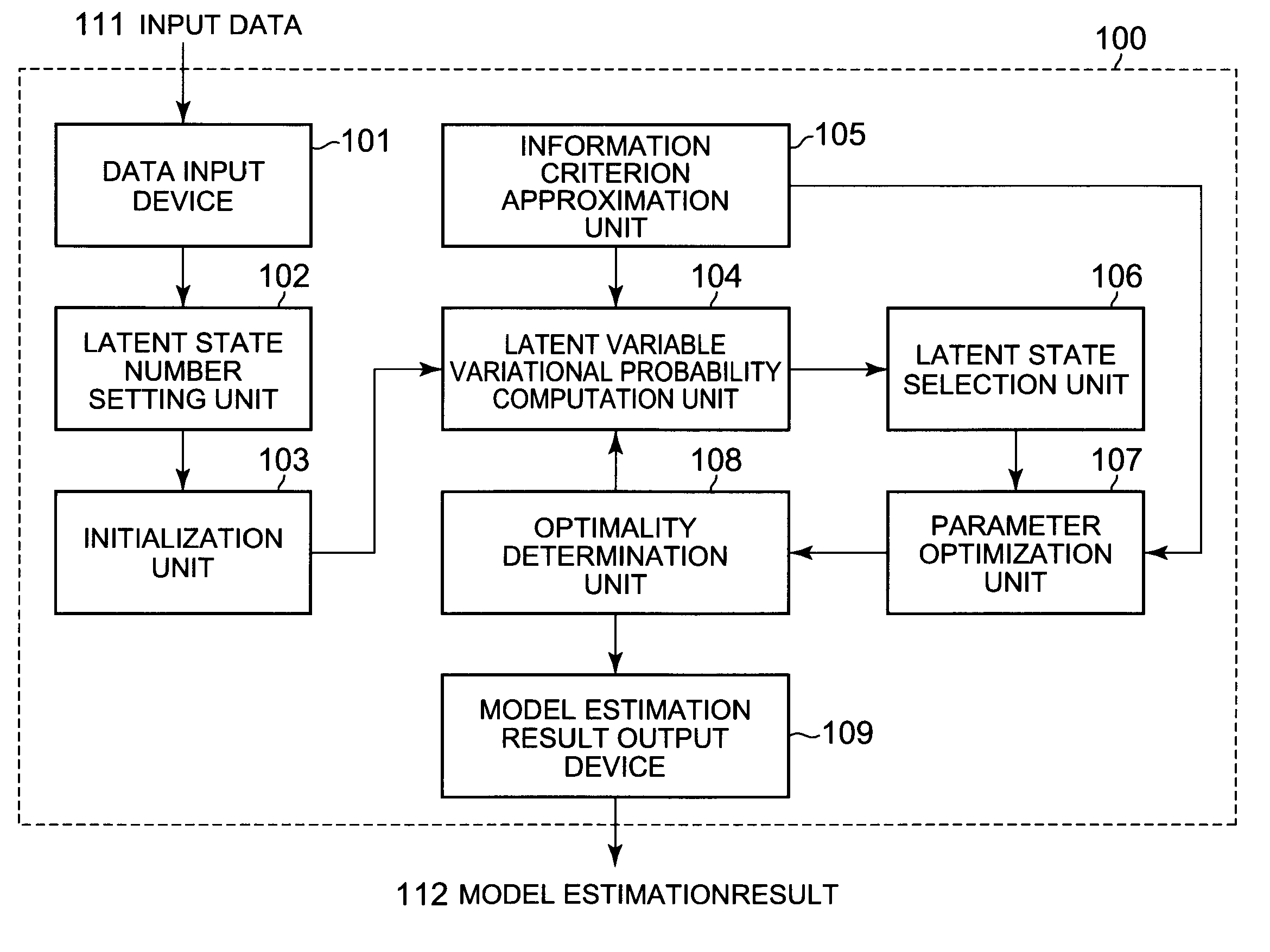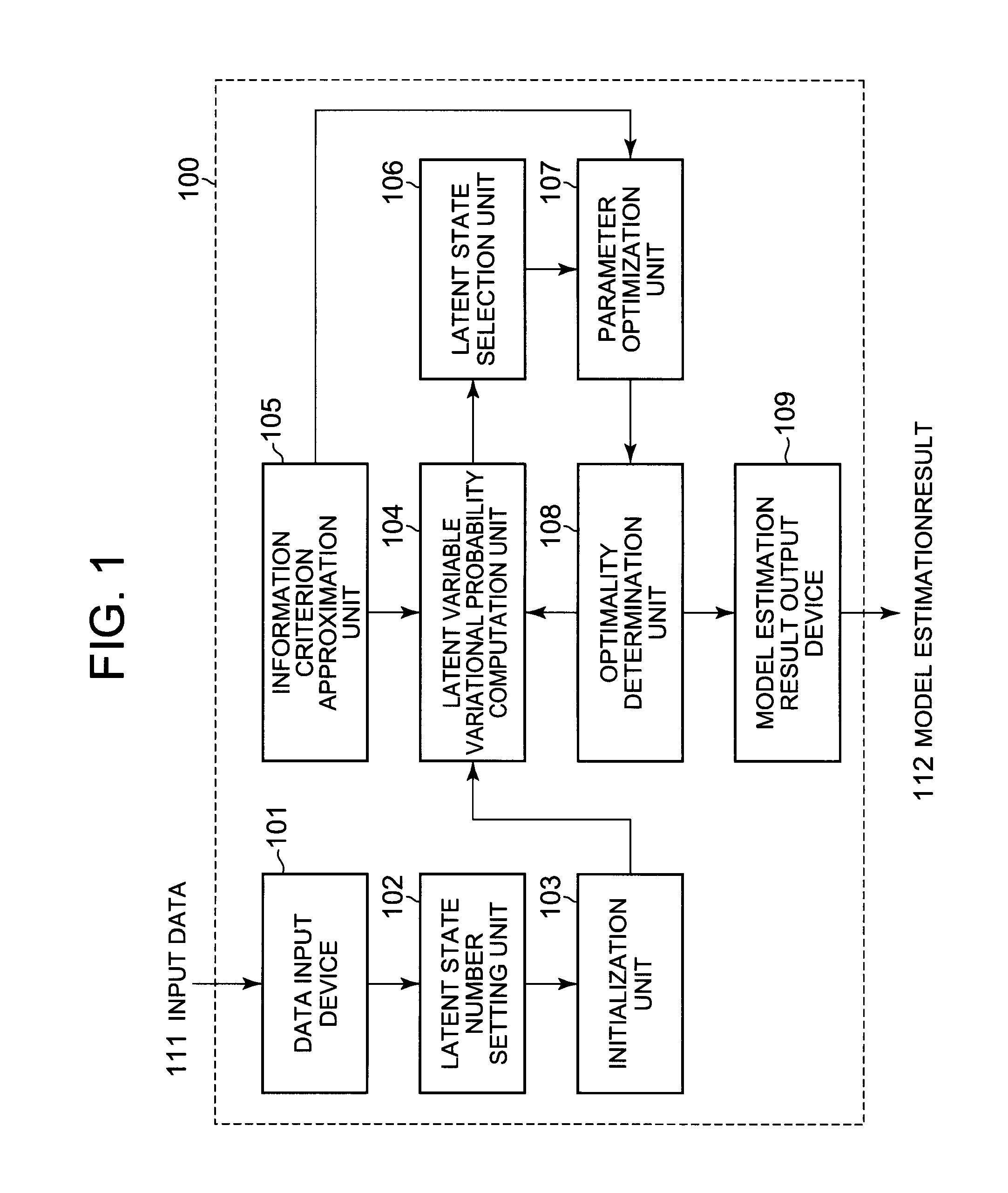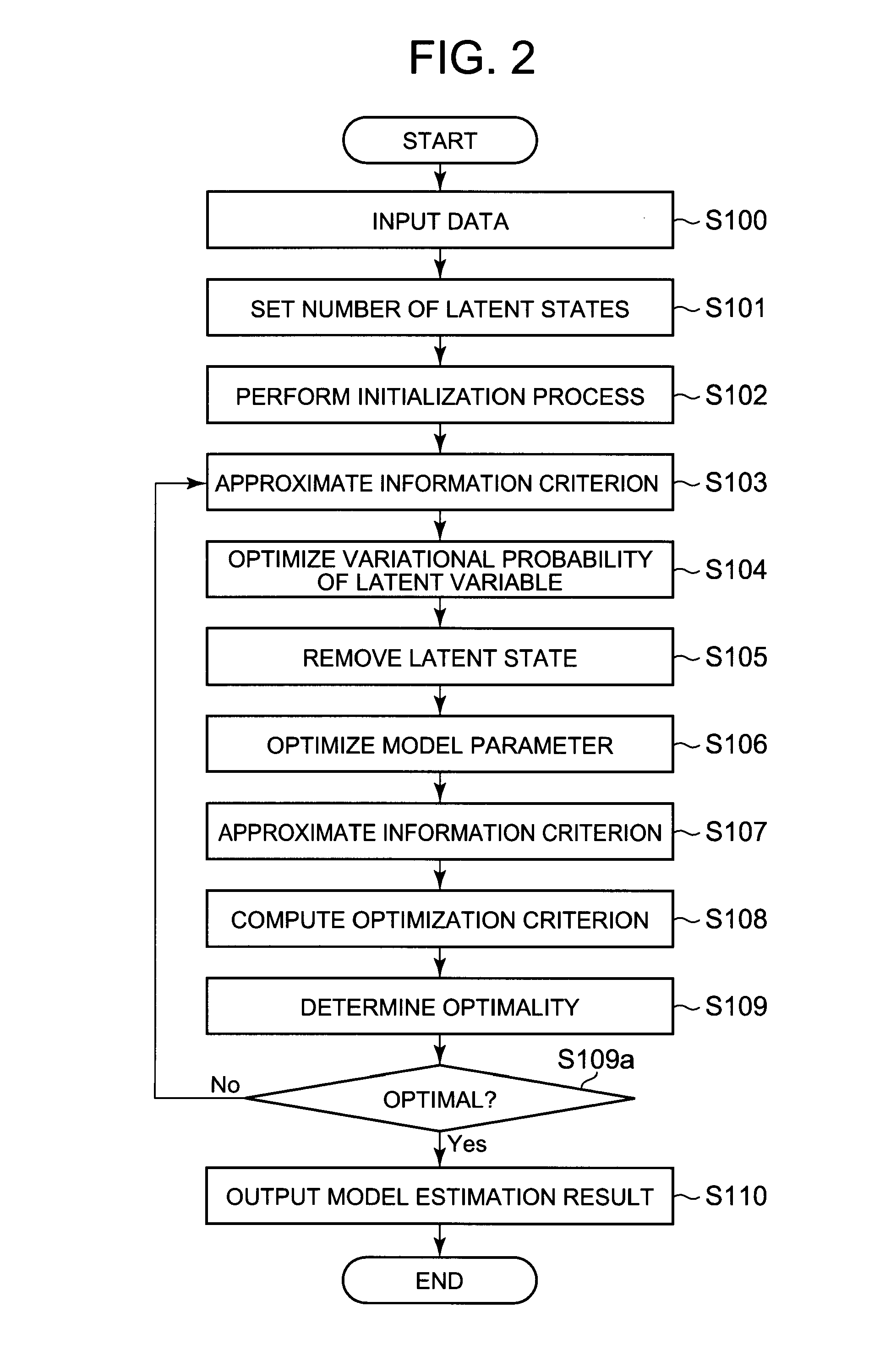Factorial hidden markov models estimation device, method, and program
a estimation method technology, applied in the field of factorial hidden markov model estimation devices, factorial hidden markov model estimation methods, and factorial hidden markov model estimation programs, can solve problems such as assumption failur
- Summary
- Abstract
- Description
- Claims
- Application Information
AI Technical Summary
Benefits of technology
Problems solved by technology
Method used
Image
Examples
Embodiment Construction
[0027]To clarify the contributions of the present invention, the difference between hidden Markov models and factorial hidden Markov models and the problem of why factorized asymptotic Bayesian inference cannot be directly applied to factorial hidden Markov models are described first.
[0028]In the following description, it is assumed that a time-dependent data sequence xn (n=1, . . . , N) is input. Here, each xn is a multivariate data sequence (xn=xn1, . . . , xnTn t=1, . . . , N) having length Tn. Moreover, each xnt is a D-dimensional observation vector, where xnt=(xnt1, . . . , xntD). Next, a layer 1 latent variable znt=(znt1, . . . , zntK) corresponding to the observed variable xnt is defined. Here, K is the number of layer 1 latent states.
[0029]In hidden Markov models, for the layer 1 latent variable, znt1 is a binary variable, where Σk zntk=1. That is, only one element of znt is 1. In hidden Markov models, a joint distribution of xn and zn is represented as p(xn, zn|θ)=Πn p(zn0|...
PUM
 Login to View More
Login to View More Abstract
Description
Claims
Application Information
 Login to View More
Login to View More - R&D
- Intellectual Property
- Life Sciences
- Materials
- Tech Scout
- Unparalleled Data Quality
- Higher Quality Content
- 60% Fewer Hallucinations
Browse by: Latest US Patents, China's latest patents, Technical Efficacy Thesaurus, Application Domain, Technology Topic, Popular Technical Reports.
© 2025 PatSnap. All rights reserved.Legal|Privacy policy|Modern Slavery Act Transparency Statement|Sitemap|About US| Contact US: help@patsnap.com



